
Discover the Hidden Gem of Sagada
Experience the mystique of Sagada, a serene mountain town in the Philippines known for its hanging coffins, caves, and breathtaking natural landscapes.
Sagada, nestled in the Cordillera Mountains of the Philippines, is a captivating destination for tourists seeking adventure, culture, and natural beauty. This quaint town is renowned for its cool climate, traditional way of life, and stunning landscapes that range from lush rice terraces to majestic limestone cliffs. One of the most famous attractions in Sagada is the Hanging Coffins, an ancient burial tradition practiced by the indigenous Igorot people. These coffins, suspended on cliff faces, offer a unique glimpse into the region's rich cultural heritage. Another must-visit site is the Sumaguing Cave, known for its intricate rock formations and challenging spelunking routes. For nature lovers, Sagada offers numerous hiking trails, including the trek to Mount Kiltepan, where you can witness a breathtaking sunrise above a sea of clouds. The Bomod-ok Falls, also known as the Big Falls, is a popular spot for a refreshing dip after a scenic hike through picturesque rice paddies. Sagada is also a haven for food enthusiasts, with local eateries serving up delicious dishes like pinikpikan and etag. Whether you're exploring the town's vibrant markets or sipping mountain-grown coffee at a cozy café, you'll find that Sagada's culinary offerings are as delightful as its landscapes.
Local tips in Sagada
- Visit during the dry season (November to February) for the best weather conditions.
- Bring cash as ATMs are scarce and credit card acceptance is limited.
- Hire a local guide for cave explorations and hikes for safety and a richer experience.
- Pack warm clothing as temperatures can drop significantly, especially at night.
- Respect local customs and traditions, particularly when visiting sacred sites.
- Try the local food and coffee, which are unique to the region.
Discover the Hidden Gem of Sagada
Sagada, nestled in the Cordillera Mountains of the Philippines, is a captivating destination for tourists seeking adventure, culture, and natural beauty. This quaint town is renowned for its cool climate, traditional way of life, and stunning landscapes that range from lush rice terraces to majestic limestone cliffs. One of the most famous attractions in Sagada is the Hanging Coffins, an ancient burial tradition practiced by the indigenous Igorot people. These coffins, suspended on cliff faces, offer a unique glimpse into the region's rich cultural heritage. Another must-visit site is the Sumaguing Cave, known for its intricate rock formations and challenging spelunking routes. For nature lovers, Sagada offers numerous hiking trails, including the trek to Mount Kiltepan, where you can witness a breathtaking sunrise above a sea of clouds. The Bomod-ok Falls, also known as the Big Falls, is a popular spot for a refreshing dip after a scenic hike through picturesque rice paddies. Sagada is also a haven for food enthusiasts, with local eateries serving up delicious dishes like pinikpikan and etag. Whether you're exploring the town's vibrant markets or sipping mountain-grown coffee at a cozy café, you'll find that Sagada's culinary offerings are as delightful as its landscapes.
When is the best time to go to Sagada?
Iconic landmarks you can’t miss
Marlboro Hill
Discover the breathtaking views and rich culture of Marlboro Hill, a must-visit hiking destination in Sagada, perfect for adventure seekers.

Sumaguing Cave
Discover the enchanting Sumaguing Cave in Sagada, a natural wonder filled with stunning formations and rich cultural heritage, perfect for adventurous travelers.

Kiltepan View
Discover the breathtaking beauty of Kiltepan View in Sagada, where stunning sunrises meet enchanting mountain landscapes for an unforgettable experience.

Bomod-ok Falls
Explore the breathtaking Bomod-ok Falls in Sagada, a stunning natural wonder surrounded by lush greenery and a serene atmosphere.

Sagada Weaving
Explore Sagada Weaving: A cultural treasure trove of handcrafted textiles showcasing the rich heritage of Sagada's weaving traditions.

Hanging Coffins of Sagada
Discover the ancient burial traditions of the Igorot people at the breathtaking Hanging Coffins of Sagada, a unique cultural treasure in the Mountain Province.

Blue Soil Hills
Discover the stunning Blue Soil Hills in Sagada, a captivating landscape known for its unique blue soil and breathtaking views, perfect for nature lovers and adventurers.

Echo Valley
Discover the serene beauty of Echo Valley, a unique ecological park in Sagada, home to iconic hanging coffins and breathtaking landscapes.

Sagada Pottery
Explore the artistry of traditional pottery at Sagada Pottery, where each handcrafted piece tells a story of culture and craftsmanship.

Sagada Heritage Village
Discover the enchanting Sagada Heritage Village, where rich traditions meet breathtaking landscapes in the heart of the Philippines.

St. Mary's Episcopal Church
Explore the serene St. Mary's Episcopal Church in Sagada, a cultural landmark surrounded by breathtaking landscapes and rich heritage.

Ambasing Bus Ruin
Explore the haunting beauty of Ambasing Bus Ruin in Sagada, where nature and history intertwine in a stunning mountain landscape.
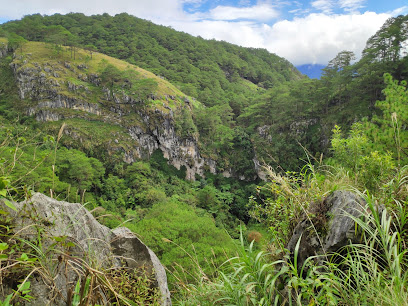
Rusty Nail Inn and Cafe
Experience the charm and warmth of Sagada at Rusty Nail Inn and Cafe, your perfect base for exploring the majestic Mountain Province.

Sagada Underground River
Explore the enchanting Sagada Underground River, a breathtaking natural wonder in the Philippines, filled with stunning rock formations and serene waters.

Lumiang Cave
Unveil the wonders of Lumiang Cave in Sagada, where breathtaking rock formations and ancient burial traditions await your exploration.

Unmissable attractions to see
Marlboro Hill
Explore the stunning panoramic views and lush landscapes of Marlboro Hill, the ultimate hiking destination in Sagada, Mountain Province.

Sumaguing Cave
Discover the breathtaking beauty and cultural significance of Sumaguing Cave, a must-visit attraction in Sagada, Philippines.
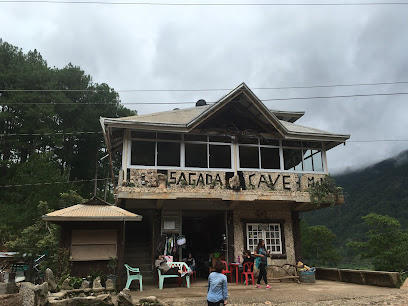
Kiltepan View
Discover the breathtaking beauty of Kiltepan View, a picturesque destination in Sagada, where stunning sunrises and panoramic mountain vistas await.
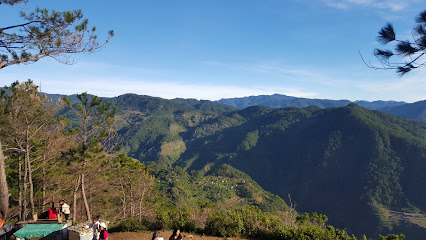
Bomod-ok Falls
Experience the enchanting beauty of Bomod-ok Falls in Sagada, a breathtaking natural wonder perfect for adventure seekers and nature lovers.

Bomod-ok Falls
Discover the breathtaking Bomod-ok Falls in Sagada, where nature’s beauty meets serene tranquility, perfect for relaxation and adventure seekers.
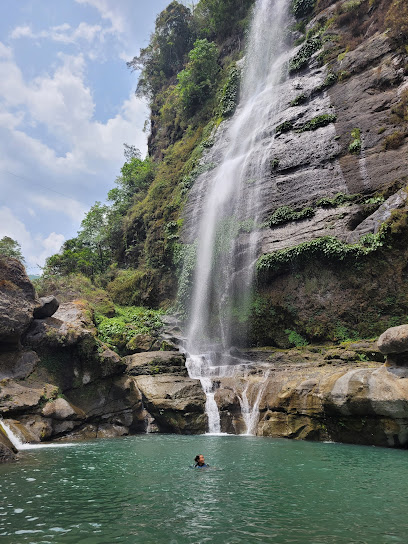
Hanging Coffins of Sagada
Discover the breathtaking Hanging Coffins of Sagada, a unique cultural treasure nestled in the Mountain Province of the Philippines, perfect for adventurers and culture enthusiasts.

Hanging Coffins of Sagada
Explore the Hanging Coffins of Sagada, a breathtaking fusion of culture and nature in the heart of the Mountain Province.

Blue Soil Hills
Experience the stunning beauty and unique allure of the Blue Soil Hills in Sagada, where vibrant landscapes and cultural heritage await every traveler.

Echo Valley
Explore Echo Valley in Sagada, a stunning ecological park known for its breathtaking views and iconic hanging coffins—a must-see for every traveler.

Sagada Heritage Village
Discover the breathtaking beauty and rich culture of Sagada Heritage Village, a hidden gem in the Mountain Province of the Philippines.

St. Mary's Episcopal Church
Explore the serene St. Mary's Episcopal Church in Sagada, a beautiful blend of culture, history, and breathtaking mountain scenery.

Bessang Pass Natural Monument
Explore the natural beauty and historical significance of Bessang Pass Natural Monument in Ilocos Sur, a must-visit destination for tourists.

Ambasing Bus Ruin
Explore the Ambasing Bus Ruin in Sagada, a historical landmark surrounded by stunning mountain landscapes, perfect for photography and cultural immersion.

Kaman-Utek
Explore the natural beauty and rich culture of Kaman-Utek, a stunning tourist attraction in Bontoc, Mountain Province, known for its breathtaking landscapes.

Sagada Underground River
Explore the enchanting Sagada Underground River, a natural wonder of stunning limestone formations and tranquil waters in the heart of Mountain Province.

Essential places to dine
Yoghurt House
Discover delightful flavors at Yoghurt House in Sagada - where Filipino meets American cuisine in a cozy mountain setting.

Sagada Lemon Pie House
Discover the delicious flavors of Sagada at the Lemon Pie House - famous for its mouthwatering lemon pie and cozy dining atmosphere.

Sagada Brew
Discover local flavors amidst breathtaking mountain views at Sagada Brew - where every meal is an adventure!

Gaia Cafe
Discover local flavors at Gaia Cafe in Sagada – where every meal is a celebration of sustainability and deliciousness amidst breathtaking mountain views.

Salt N Pepper
Experience a unique blend of local and international cuisine at Salt N Pepper in Sagada, Mountain Province - A true taste adventure awaits!

Log Cabin Sagada
Discover the flavors of Filipino cuisine at Log Cabin Sagada – where tradition meets taste in a cozy mountain setting.

Sagada Hub
Experience authentic Filipino flavors at Sagada Hub, nestled in the breathtaking landscapes of Mountain Province.

Sagada Bistro
Experience authentic Filipino cuisine at Sagada Bistro while enjoying breathtaking mountain views in the heart of Sagada.

Happy House Restaurant
Experience authentic Filipino flavors and warm hospitality at Happy House Restaurant in Sagada, your go-to spot for delicious meals amidst stunning landscapes.

Sunset View and Pizza Bar
Discover breathtaking views and delicious pizzas at Sunset View and Pizza Bar in Sagada - a perfect blend of nature's beauty and culinary delight.

SLABHOUSE Cafe and Restaurant
Experience authentic Filipino flavors at SLABHOUSE Cafe and Restaurant in scenic Sagada, Mountain Province – a culinary retreat for every traveler.

Sagada Taste Restaurant
Experience authentic Filipino cuisine with breathtaking mountain views at Sagada Taste Restaurant in Sagada, Mountain Province.
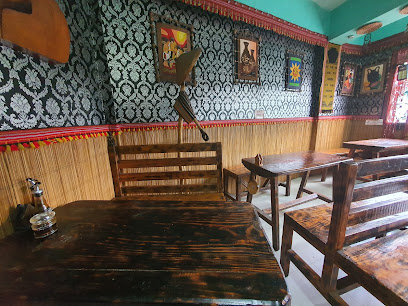
Vincent's
Discover Vincent's in Sagada: where local flavors meet warm hospitality amidst stunning mountain views.

The Cauldron
Discover authentic Filipino cuisine at The Cauldron in Sagada - where local flavors meet warm hospitality in a cozy setting.

Pumpkin's
Experience the flavors of Sagada at Pumpkin's - a cozy restaurant offering local dishes amidst stunning mountain views.

Markets, malls and hidden boutiques
Sumaguing Cave
Discover the enchanting beauty of Sumaguing Cave, a natural wonder in Sagada, where breathtaking formations await your exploration.

Sagada Weaving
Explore the rich heritage of Philippine weaving at Sagada Weaving, where tradition meets artistry in handwoven textiles.

Hanging Coffins of Sagada
Explore the breathtaking Hanging Coffins of Sagada, a cultural treasure showcasing ancient burial practices amidst stunning mountain landscapes.

Misty Lodge and Cafe
Experience the charm of Misty Lodge and Cafe in Sagada, where delicious coffee meets thrilling adventures in the heart of Mountain Province.

Blue Soil Hills
Explore the stunning Blue Soil Hills in Sagada, a unique natural wonder with breathtaking landscapes and rich cultural experiences.
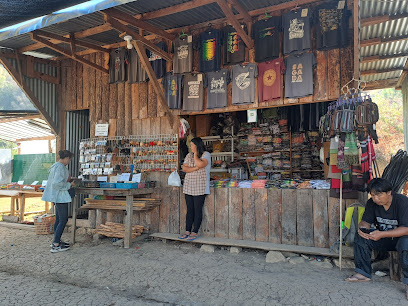
Sagada Pottery
Explore the charm of Sagada Pottery, where traditional craftsmanship meets breathtaking mountain views in the heart of the Philippines.

Sagada Rust n Wood Cafe
Discover the rustic charm and cozy atmosphere of Sagada Rust n Wood Cafe, where local flavors meet breathtaking views in the heart of the Mountain Province.

Toast Ave. Co.
Experience the rich flavors of Sagada's coffee culture at Toast Ave. Co., a cozy retreat for travelers and coffee enthusiasts.

Sagada Cave Man
Explore the beauty of Sagada with a refreshing stop at Sagada Cave Man, your go-to convenience store for local snacks and drinks.
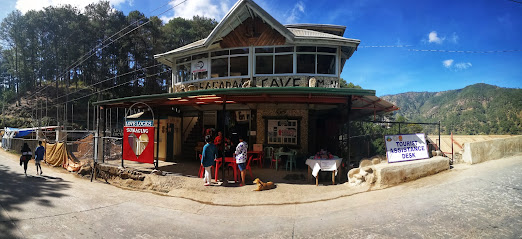
Sagada Public Market
Discover the heart of Sagada at the vibrant public market, brimming with local crafts, fresh produce, and authentic flavors.

Marie's Homemade Yogurt
Savor the exquisite taste of artisanal yogurt at Marie's in Sagada, where every scoop celebrates local ingredients and craftsmanship.

Sagada Homemade Whole Wheat Bread
Experience the warmth of Sagada with every bite of homemade whole wheat bread, a local treasure in the heart of the mountains.

Rockview Hardware
Discover the charm and craftsmanship of Sagada at Rockview Hardware, your local source for unique tools and authentic souvenirs.

Dapliyan Coffee
Dapliyan Coffee in Sagada offers the perfect blend of aromatic brews and stunning mountain views for a relaxing coffee experience.

Yodong's Store
Experience the charm of Sagada at Yodong's Store, where local crafts and culture come together in a welcoming atmosphere.

Essential bars & hidden hideouts
Sagada Brew
Experience the local flavors of Sagada at Sagada Brew, a cozy restaurant offering delicious dishes and refreshing drinks in a stunning mountain setting.

Misty Lodge and Cafe
Discover the perfect blend of delicious cuisine, exceptional coffee, and thrilling adventures at Misty Lodge and Cafe in Sagada.

Log Cabin Sagada
Discover the flavors of the Philippines in the heart of Sagada at Log Cabin, a culinary gem known for its authentic dishes and cozy atmosphere.

Sagada Cellar Door
Discover the unique flavors of Sagada at the first craft brewery and grill, offering a cozy bed and breakfast experience in the heart of the mountains.

Sagada Hub
Experience authentic Filipino cuisine at Sagada Hub, a charming restaurant nestled in the breathtaking landscapes of Sagada, Mountain Province.

Sagada Bistro
Experience the flavors of Sagada at Sagada Bistro, where local ingredients meet warm hospitality in a cozy mountain setting.

Piitik Wines
Discover the essence of Sagada at Piitik Wines, where local and international wines meet stunning mountain views in a cozy atmosphere.

Sunset View and Pizza Bar
Experience breathtaking sunsets and delicious pizzas at Sunset View and Pizza Bar in Sagada, Mountain Province.

Moonhouse
Experience the unique charm of Moonhouse in Sagada, where local culture meets a cozy bar atmosphere amidst breathtaking mountain scenery.

Sagada Taste Restaurant
Discover the authentic flavors of Sagada at Sagada Taste Restaurant, where local cuisine meets breathtaking mountain views.

SLABHOUSE Rooms and Restaurant
Experience the essence of Sagada at SLABHOUSE Rooms and Restaurant, where local flavors meet stunning mountain views.

DONGDAEMUN RESTOBAR
Savor the essence of Asia at Dongdaemun Restobar, where each dish is a journey through the rich culinary heritage of the Mountain Province.

Sagada Clay House Wine Bar
Experience the charm of Sagada at the Clay House Wine Bar, where exceptional wines meet stunning mountain views in a cozy atmosphere.

Ramyun Restaurant and Bar
Discover the cozy charm of Ramyun Restaurant and Bar in Sagada, where authentic Korean flavors meet stunning mountain views.

Alapo's Restaurant
Discover Alapo's Restaurant in Sagada for a taste of authentic Filipino cuisine amidst stunning mountain scenery.

Local Phrases
-
- HelloKumusta
[koo-moo-sta] - GoodbyeSaan nga pagyamanan
[saan nga pag-ya-ma-nan] - YesOo
[oh-oh] - NoSaan
[saan] - Please/You're welcomeAgyamanak
[ag-ya-ma-nak] - Thank youSalamat
[sa-la-mat] - Excuse me/SorryPasensya
[pa-sen-sya] - How are you?Kanayun
[ka-na-yun] - Fine. And you?Nagkanayun. Kenka?
[nag-ka-na-yun. ken-ka?] - Do you speak English?Kasta met ti Ingles mo?
[kas-ta met ti ing-gles mo?] - I don't understandSaankon
[saan-kon]
- HelloKumusta
-
- I'd like to see the menu, pleaseAgyamanak nga makitam ti menu
[ag-ya-ma-nak nga ma-ki-tam ti me-nu] - I don't eat meatSaanak nga agikik
[saan-ak nga ag-ee-kik] - Cheers!Tagay!
[ta-gai] - I would like to pay, pleaseAgyamanak nga adda mabayadan
[ag-ya-ma-nak nga ad-da ma-ba-ya-dan]
- I'd like to see the menu, pleaseAgyamanak nga makitam ti menu
-
- Help!Tabang!
[ta-bang] - Go away!Agbalin ka!
[ag-ba-lin ka] - Call the Police!Tawagam ti Pulis!
[ta-wa-gam ti pu-lis] - Call a doctor!Tawagam ti doktor!
[ta-wa-gam ti dok-tor] - I'm lostNaulilenak
[na-u-li-le-nak] - I'm illMaysaakak
[ma-ya-sa-a-kak]
- Help!Tabang!
-
- I'd like to buy...Agyamanak nga agbili...
[ag-ya-ma-nak nga ag-bi-li...] - I'm just lookingBassit lang ti pagtignayak
[bas-sit lang ti pag-tig-naya-k] - How much is it?Pila daytoy?
[pi-la dai-toy?] - That's too expensiveMasyado a gastos
[ma-sya-do a gas-tos] - Can you lower the price?Agbalin ka met ti presyo?
[ag-ba-lin ka met ti pres-yo?]
- I'd like to buy...Agyamanak nga agbili...
-
- What time is it?Ania ti oras?
[a-ni-a ti o-ras] - It's one o'clockMaysa a oras
[ma-ya-sa a o-ras] - Half past (10)Denggen
[deng-gen] - MorningBigat
[bi-gat] - AfternoonUdto
[ud-to] - EveningGabi
[ga-bi] - YesterdayKanayon
[ka-na-yon] - TodayDitoy
[di-toy] - TomorrowMakatinneg
[ma-ka-tin-neg] - 1Isa
[ee-sa] - 2Duwa
[du-wa] - 3Tallo
[tal-lo] - 4Upat
[u-pat] - 5Lima
[li-ma] - 6Innem
[in-nem] - 7Pito
[pi-to] - 8Walo
[wa-lo] - 9Siam
[syam] - 10Sangapulo
[san-ga-pu-lo]
- What time is it?Ania ti oras?
-
- Where's a/the...?Sadino ti...
[sa-di-no ti...] - What's the address?Ania ti addaress?
[a-ni-a ti ad-da-ress] - Can you show me (on the map)?Agbalin ka met nga ipakita (it mapa)?
[ag-ba-lin ka met nga i-pa-ki-ta (it ma-pa)] - When's the next (bus)?Kayatko ti sumaruno a (bus)?
[ka-ya-tko ti su-ma-ru-no a (bus)] - A ticket (to ....)Ti tiket (padas...)
[ti ti-ket (pa-das...)]
- Where's a/the...?Sadino ti...
History of Sagada
-
Sagada, nestled in the Cordillera Mountains of the Philippines, has a rich pre-colonial history. The indigenous people of Sagada, primarily the Kankanaey, practiced traditional farming, hunting, and weaving. They lived in tight-knit communities and developed unique customs and spiritual practices that are still evident today. The Kankanaey are known for their intricate rice terraces, which not only showcase their ingenuity in agriculture but also their deep respect for nature.
-
During the Spanish colonization of the Philippines in the 16th century, Sagada remained relatively isolated due to its remote location. The Spanish were unable to fully penetrate the Cordillera region, allowing the indigenous people to maintain much of their cultural heritage. However, the Spanish did attempt to influence the area, introducing Christianity and establishing missions. The people of Sagada were known for their resistance to Spanish rule, maintaining their autonomy and traditional ways of life.
-
The American colonial period in the early 20th century brought significant changes to Sagada. American missionaries established the Anglican Church of Saint Mary the Virgin in 1904, which remains a central figure in the community. This period also saw the introduction of modern education and healthcare systems. The construction of roads and infrastructure facilitated greater connectivity with the rest of the Philippines, gradually integrating Sagada into the national fabric while preserving its unique cultural identity.
-
Sagada, like much of the Philippines, was affected by World War II and the Japanese occupation from 1941 to 1945. The town became a refuge for people fleeing the conflict, and the rugged terrain provided a strategic advantage for guerrilla fighters. The local population played a significant role in resisting Japanese forces, contributing to the broader Filipino effort to reclaim their country. The war left an indelible mark on Sagada, with stories of bravery and resilience still recounted by the older generation.
-
In the latter half of the 20th century, Sagada began to gain recognition as a tourist destination, known for its stunning natural landscapes, limestone caves, and the famous hanging coffins. Efforts to preserve the cultural heritage of Sagada intensified, with local and national initiatives aimed at protecting traditional practices and sites. The influx of tourists has both bolstered the local economy and posed challenges in maintaining the delicate balance between development and cultural preservation.
-
Today, Sagada is a vibrant community that celebrates its rich cultural heritage through various festivals and events. The annual Begnas Festival is a prime example, where locals perform traditional rituals, dances, and music to honor their ancestors and express gratitude for a bountiful harvest. Sagada's cultural landscape is a testament to the resilience and adaptability of its people, who continue to navigate the complexities of modernization while holding steadfast to their ancestral roots.
Sagada Essentials
-
Sagada is located in the Mountain Province of the Philippines. The nearest major city is Baguio, which is approximately 150 kilometers away. From Manila, you can take a bus to Baguio, which takes around 6-7 hours. From Baguio, you can catch another bus or van to Sagada, which takes an additional 5-6 hours. Alternatively, you can take a direct bus from Manila to Sagada, operated by companies like Coda Lines, which typically takes around 12-13 hours.
-
Sagada is a small town, and many attractions are within walking distance. For further destinations, tricycles and jeepneys are available. Renting a motorbike is another option for more flexibility. Note that the terrain can be challenging, so be cautious when driving. Taxis and ride-sharing services are not available in Sagada.
-
The official currency in the Philippines is the Philippine Peso (PHP). Credit cards are accepted in some hotels and restaurants, but it is advisable to carry cash, especially for smaller establishments and local markets. ATMs are available in Sagada, but it is wise to withdraw sufficient cash beforehand as machines may run out of cash or be out of service.
-
Sagada is generally a safe destination for tourists. However, it is always wise to exercise standard precautions. Avoid walking alone at night in unfamiliar areas and keep an eye on your belongings in crowded places. There are no specific high-crime areas targeting tourists, but staying vigilant is recommended.
-
In case of emergency, dial 911 for immediate assistance. Sagada has a local police station and a small hospital for medical emergencies. It is recommended to have travel insurance that covers medical emergencies. For minor health issues, there are pharmacies in town where you can purchase over-the-counter medications.
-
Fashion: Do dress modestly, especially when visiting religious sites. Avoid wearing revealing clothing. Religion: Do respect local customs and traditions. Always remove your shoes when entering churches and sacred areas. Public Transport: Do be respectful and give up your seat to elderly passengers. Don't eat or drink on public transport. Greetings: Do greet people with a friendly 'hello' or 'good day'. A slight nod is also a sign of respect. Eating & Drinking: Do try local delicacies and accept food offerings graciously. Don't refuse hospitality, as it is considered impolite.
-
To experience Sagada like a local, visit the local markets where you can buy fresh produce and traditional crafts. Engage with locals, as they are often friendly and willing to share stories about the town's history and culture. Don't miss visiting the famous hanging coffins, Echo Valley, and the Sumaguing Cave for spelunking. For a unique experience, join a sunrise trek to Kiltepan Viewpoint for breathtaking views.
Trending Landmark in Sagada
Nearby Cities to Sagada
-
Things To Do in Vigan
-
Things To Do in Baguio
-
Things To Do in Ilocos Norte
-
Things To Do in Angeles City
-
Things To Do in Subic
-
Things To Do in Manila
-
Things To Do in Tagaytay
-
Things To Do in Batanes
-
Things To Do in Legazpi
-
Things To Do in Boracay
-
Things To Do in Cebu City
-
Things To Do in Puerto Princesa
-
Things To Do in Bohol
-
Things To Do in Palawan
-
Things To Do in Camiguin










